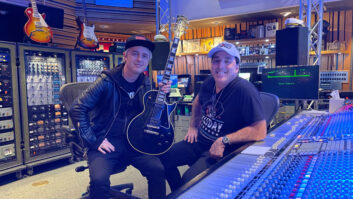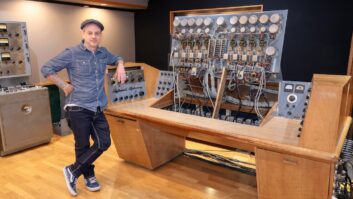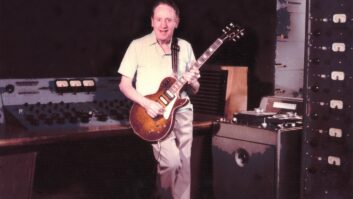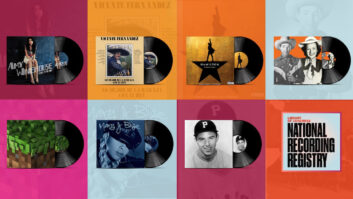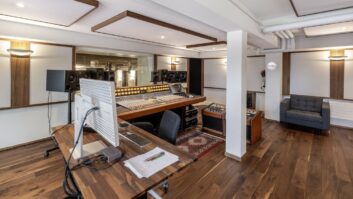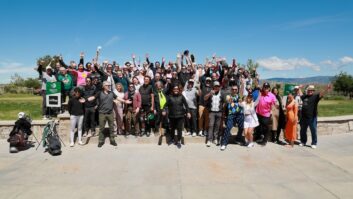by Christopher Walsh.
That audio professionals are building personal and home-based studios in unprecedented numbers is hardly a new phenomenon. But this migration, launched by the speedy march of digital technology and advanced by multiple factors including economic conditions, is spurring further development across a range of goods and services related to audio facility design and construction.
For the industry’s top architects and acousticians, the high rate of activity on the personal-studio front serves as a buffer against present economic uncertainty, to the extent that said uncertainty has affected their business at all. While some projects have disappeared alongside the institutions that were to finance them, many successful artists, producers and engineers, and even hobbyists are realizing their dreams of a production studio designed and built to their personal specifications.
“Digital is totally pervasive,” says John Storyk of the Walters-Storyk Design Group. “That’s a no-brainer, but what does that mean? It means the equipment got smaller, more affordable and easier to maintain; whole studios are being built with no maintenance staff. Pieces of them are ‘disposable,’ for that matter–people are viewing equipment as commodities, instead of financing them like tractors. For me, all of that is good news, because it makes it more affordable. Studios are half the price in today’s dollars that they were in 20-year-old dollars. There are very few industries that do that. Simply stated, studios have become more democratic!”
In terms of control rooms, says Storyk, smaller can be better, though new acoustical issues are introduced. “If the equipment got smaller and more affordable, and everybody realized that they can have these studios in any location, including their home, then there’s no reason to make control rooms 500 square feet,” he observes. “They can get smaller and cozier. Though the demand for audio performance remains the same, small rooms present some very interesting problems, acoustically and electronically, at low frequencies. At the same time, we’re paying more attention to low frequencies now than we did 30 years ago, due to different music genres and technologies (i.e. urban music, 5.1, etc.). Combine those trends, and we have new critical issues: small rooms, louder, more attention to low frequency, but more dependence on modal analysis, often referred to as standing waves.”
Solutions, he continues, come in the form of better measuring and prediction tools. “And for the first time,” he adds, “we have, in the last five years, a very robust and mature universe of prefabricated, surface-applied acoustic treatments, and that’s really good news. You used to have to custom-build everything. Now, because of the increased need, continued growth in the studio design community, and adventurous studio owners, the universe of treatments has really started to grow. We now have crossed over the tipping point, which means we have more than two companies manufacturing these products, which, of course, means we have price competition, research competition, etc. This is very important for our industry, and it’s part of this democratic trend of everyone being able to have a studio.”
One way that economics plays a part in home studio construction, says Russ Berger of the Russ Berger Design Group, is “it allows them to work longer hours. There was a problem a lot of engineers were facing: They wanted to provide a surround mix, but nobody was going to pay for it, so a lot of guys took the stuff home and worked on it in their own time, because they wanted to do the job right. We’re even seeing engineers that work at major post houses, where they’ll put rooms at home to be able to continue their work, because they don’t have enough hours in the day to be able to get their work done.”
One trend, Berger adds, lends credence to the “hire a professional” maxim. “Maybe it’s just because that’s what we get called in on a lot,” he allows, “but people will build a room, buy all the equipment and even buy acoustical materials and apply it, and they can’t figure out why their product doesn’t reference when they carry it out. It’s becoming painfully obvious that if you don’t have an adequate, appropriate acoustic environment to mix in, you’re not going to be able to come up with a product that works. That’s why it’s a shame that the major commercial facilities are dwindling, because they would spend the money, time and effort to really get the reference right. And there aren’t any shortcuts to that. You might be able to trick a mix out of your system once, but it’s not going to provide you with consistent results, and you’re spending all your effort and energy working to counteract the problems that you have with your reference.”
In Nashville, Carl Tatz of Carl Tatz Design has cultivated a niche in addressing this problem with his PhantomFocus system, realized through a combination of techniques, protocol, hardware and software, which he has implemented at the Grand Ole Opry and Ryman Auditorium radio studios, as well as in many commercial and personal studios.
“Studio work is continuing to move into the home,” says Tatz, who completed home-based studios for Rascal Flatts’ Joe Don Rooney and Jay DeMarcus last autumn. “I design studios for [clients], or they’ll already have an existing studio and realize that their monitors suck. They’ll hear about the PhantomFocus system, and I go in and do that. All I can tell you is that people, primarily through word of mouth–or they’ll go to one of my facilities, hear the speakers and realize what they don’t have–are slowly realizing that it’s not the shiny knobs, or even the computer. It’s the speakers, stupid. There’s nothing more important in a control room.”
Fran Manzella of Francis Manzella Design Limited reports a number of mid- to large-size personal studios in progress, though the recession has produced casualties, as it has among his peers’ projects. Meanwhile, he adds, some commercial clients have actually expanded, suggesting natural business-cycle activity.
“I’d like to consider these economic times a bit of a shakeout,” says Manzella. “The people who aren’t good and don’t deliver the goods aren’t going to survive. The good part about that is it opens up opportunities for the guys that are good at what they do. I’ve seen [Francis Manzella Design clients] Great City and CDM Productions complete expansions in the past year.
“So more than a technical thing, I wonder if the trend is more about how businesses adapt to these changing times, and the ones who survive are taking advantage of the fact that there are fewer players. It’s about making the sensible move for your business, whatever that is. Those are the smart people who are figuring that out: ‘What’s the best move for me?’ And sometimes, the best move may be to make no move; it may be to sit still.”
Another trend in small rooms is a small-format console, for professionals unwilling to work entirely in the box. With several such consoles to choose from, this evolution is welcome for manufacturers such as Argosy Console. “Small-room design, executed with the right console, doesn’t feel small anymore,” says Argosy’s David Atkins. “So the small room is really the big room, with the right piece of furniture.”
As with small-format consoles, however, Atkins is finding that commercial and corporate clients are seeking the same cost-effective solutions as the personal studio owner. “It started with the private- and consumer-level customer, the home studio,” he observes. “In the past few months or year, we’ve found that the consumer-level product has slowed, and where our business is growing is the corporate and institutional and commercial end, where we’ve become attractive. They used to be able to buy whatever they wanted, and now they’ve had to rethink a bit as far as the economics, the viability and the technology.”
Regardless of economic conditions, designers and clients alike can look forward to technological advance, says Storyk. “Auralization–the ability to listen to the rooms before we build them, from the drawings–will become more and more useful,” he predicts. “That means we can test and fine-tune designs without building them. It means we’ll save money by getting better prediction. We’ve been doing it for a while, but it’s getting easier to do and a little more affordable as the software comes down in price.
“You’re also going to see our world–the audio recording world–really seeping into lots of other universes,” he adds. “More and more churches will have recording studios. Radio stations will continue to develop as content capturing centers. Nightclubs will have recording capabilities. These are exciting times, no doubt.”
Walters-Storyk Design Group
www.wsdg.com
Russ Berger Design Group
www.rbdg.com
Carl Tatz Design
www.carltatzdesign.com
Fran Manzella Design Ltd.
www.fmdesign.com
Argosy Console
www.argosyconsole.com
